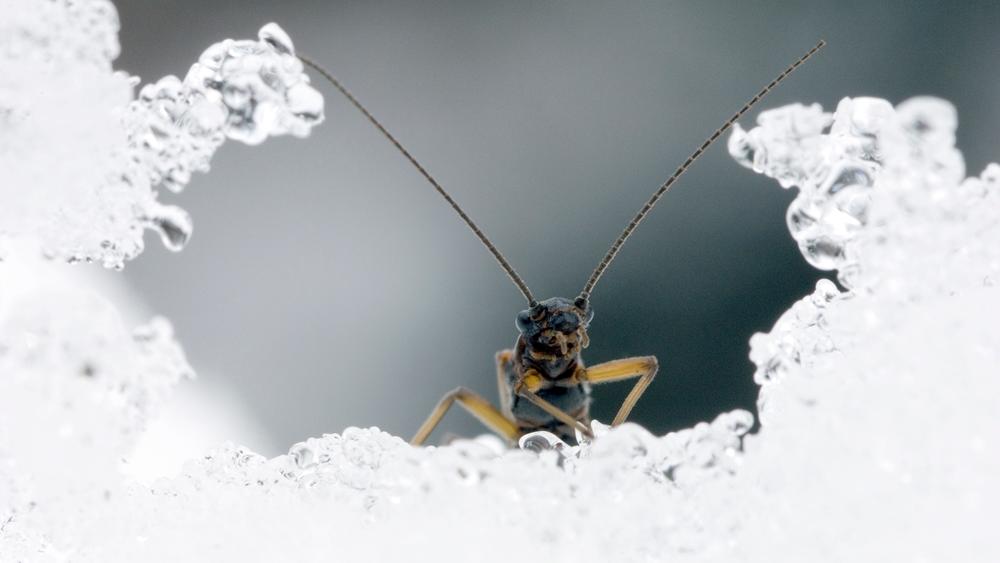
Winter stoneflies are a winter phenomenon, at least on ecologically intact streams. | Photo: Rik Oggioni/Shutterstock
When the days get darker and the temperature falls, most insects disappear from the scene. But there are some exceptions that can cope well with cold temperatures and long winters, one being the family of winter stoneflies (Taeniopterygidae). Little is known about how they manage to adapt to freezing water and air temperatures. The larvae, which hatch from streams in winter, are dark brown to deep black, enabling them to absorb the warmth of the sun. When they reach the surface, they can increase the levels of anti-freeze in their bodies and seek shelter under snow pockets. Although they have wings, winter stoneflies walk over snow and ice – on the tips of their feet to avoid ice crystals. They depend on cool, oxygen-rich stream headwaters and are sensitive to inputs of nutrients, warmer winter temperatures and slowed flow conditions. Winter stoneflies are therefore rare and an important bio-indicator for assessing habitats in rivers and streams.
This is just one of the many stories we could have highlighted. These little idiosyncrasies connected to organisms and their adaptation strategies, and the way they all fit together into a bigger picture drive our fascination for life below and above the water surface. In order to protect and preserve the diversity of species, genes and ecosystems, their services and functions, we seek to understand the fundamental processes in water bodies and how they respond to environmental change. We thank all those who support us in this work, and wish you a peaceful end of 2020 and a healthy start to the New Year!


